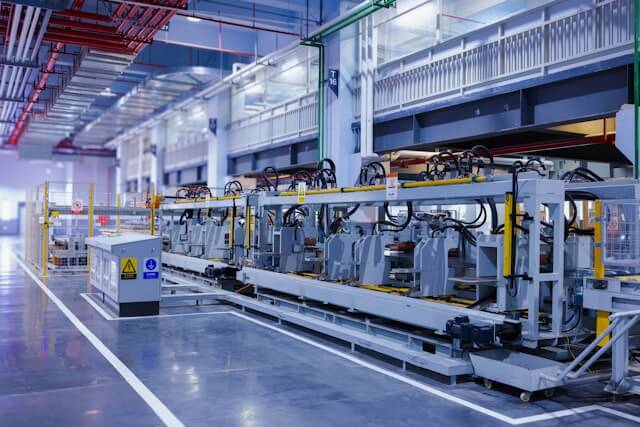Part One: The Evolution of China’s Environmental Policies
China’s rapid ascent as a global economic leader has significantly shaped its environmental landscape. For decades, the country placed immense emphasis on economic development, propelling itself into a manufacturing giant. However, this rapid industrialization came at a cost—severe environmental degradation, from air and water pollution to deforestation and loss of biodiversity. As a result, China’s earlier focus on growth over sustainability led to widespread ecological damage.
In response to growing environmental concerns, China has made a dramatic policy shift in recent years. In 2014, the Chinese government introduced the Environmental Protection Law, a groundbreaking piece of legislation designed to hold industries accountable for pollution. This law empowered regulatory bodies to impose harsher penalties on polluters, signaling a new era of environmental governance.
China’s environmental policy overhaul is also aligned with global climate commitments. The country is now investing heavily in renewable energy, working to lower its carbon footprint, and encouraging more sustainable manufacturing practices. By promoting greener industries and reducing reliance on traditional fossil fuels, China is positioning itself as a leader in the global transition toward environmental sustainability.
Part Two: Responses and Adaptations from Global Manufacturing Sectors
The shift in China’s environmental policies has profoundly impacted global manufacturing strategies, forcing businesses to adapt to stricter regulations. Previously, many manufacturers benefited from China’s more relaxed environmental laws, but the recent tightening has required significant changes. Companies must now reassess their entire production processes to align with the new standards. This might involve switching to eco-friendly materials, reducing emissions and waste, or incorporating energy-efficient technologies into their operations.
In response to these regulations, businesses are increasingly adopting environmental management systems to monitor and control their environmental impact. These systems help track resource usage, identify areas for improvement, and ensure ongoing compliance with China’s stricter regulations. By doing so, manufacturers can not only meet legal requirements but also improve their long-term sustainability. The necessity of these adaptations highlights the growing importance of environmental responsibility in global manufacturing.
For those interested in a deeper exploration, ‘The Impact of China’s Environmental Regulations on Manufacturing’ provides a thorough analysis of how these policies are reshaping the industry both within China and internationally. This shift underscores the need for businesses to integrate environmental considerations into their core strategies.
Part Three: The Use of Technology

Technology plays a vital role in helping global manufacturers adapt to China’s new environmental policies. Digital technologies, in particular, offer tools for better monitoring, efficiency, and innovation, enabling businesses to comply with stricter regulations while staying competitive. Automation, for instance, can help streamline production, minimize waste, and improve energy efficiency, all of which contribute to more sustainable operations.
Sustainable manufacturing platforms are becoming increasingly valuable in this shift. These platforms provide manufacturers with access to a database of eco-friendly materials and processes, making it easier for companies to adopt greener practices. By integrating these resources into their operations, businesses can transition to sustainability more seamlessly.
Sustainability analytics further enhances this approach by collecting and analyzing data related to a company’s environmental footprint. These insights help manufacturers track their compliance with regulations, identify trends, and pinpoint areas for improvement. This data-driven approach allows companies to make smarter, more informed decisions that not only meet regulatory requirements but also promote long-term environmental responsibility.
Part Four: Looking Ahead
As China continues to tighten its environmental policies, the global manufacturing landscape is undergoing a significant transformation. Manufacturers are now faced with the dual challenge of maintaining high levels of productivity while adhering to increasingly stringent environmental regulations. This shift requires substantial changes in processes, materials, and technologies, which can be both demanding and costly.
Nonetheless, these difficulties also offer new possibilities for development and creativity. Companies that can successfully navigate these regulatory changes not only achieve compliance but also enhance their brand reputation, boost their competitiveness, and contribute to long-term sustainability. Those able to adapt are better positioned to meet the growing consumer demand for environmentally responsible products.
By adopting eco-friendly practices and integrating advanced technologies, manufacturers can align their operations with global efforts to combat climate change. This shift toward greener manufacturing is not only a strategic investment in regulatory compliance but also a pathway to future-proofing businesses in a rapidly evolving market. Though the journey is challenging, the rewards—ranging from cost savings to improved market position—make the investment worthwhile.
In conclusion, China’s shifting environmental policies present both challenges and opportunities for manufacturers worldwide. These regulations push companies to not only rethink their production methods but also take on a more active role in promoting global environmental sustainability. The need to comply with stricter laws forces businesses to adopt greener technologies, reduce waste, and focus on energy efficiency, ultimately transforming the way manufacturing is done.
